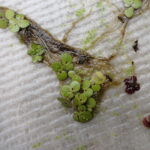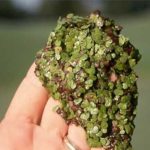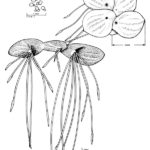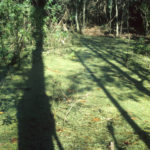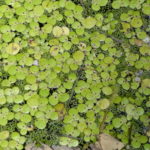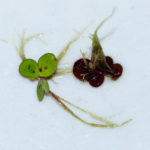Spirodela polyrhiza
Illustration courtesy of University of Florida/IFAS Center for Aquatic and Invasive Plants. Used with permission.
What is Giant Duckweed?
Physical Characteristics
Leaves:
- Flat, oval shape
- 0.13 to 0.39 inches long
- Top – dark, glossy green
- Bottom – reddish purple
- Singular red-purple dot
Flowers:
- Produce buds that detach and sit at the bottom of pond
- Year round, abundant in the fall
Roots:
- 4 to 12 bundled roots
- Long pointed root-cap
Where Does it Grow?
USDA, NRCS. The PLANTS Database (http://plants.usda.gov). National Plant Data Team, Greensboro, NC 27401-4901 USA.
Giant Duckweed often grows in ponds, lakes, bayous, and sluggish streams. Often more than one species of duckweed will be associated together in these colonies.
Is it Invasive?
Although giant duckweed is native, it can be an aggressive invader of ponds and are often found mixed in with other duckweeds, mosquito fern, and/or watermeal. If colonies cover the surface of the water, then oxygen depletion and fish kills can occur. These plants should be controlled before they cover the entire surface of the pond.
Pros and Cons of Giant Duckweed
Many kinds of ducks consume duckweed and often transport it to other bodies of water. Dense duckweed colonies provide habitats for micro invertebrates, but if duckweed completely covers the surface of a pond for an extended period, it will cause oxygen depletion. These colonies will also eliminate submerged plants by blocking sunlight penetration.
